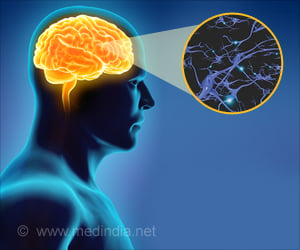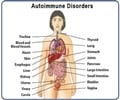Current multiple sclerosis treatments aim to prevent the immune system from doing further harm, but none have been shown to repair damaged myelin.

‘Multiple sclerosis strikes when the immune system attacks myelin, layers of fatty insulating membrane that surround nerve fibers.’





In light of previous laboratory studies of the antihistamine compound at UCSF, the researchers said, the drug most likely exerted its effect by repairing damage MS had inflicted on myelin, an insulating membrane that speeds transmission of electrical signals in the nervous system. The drug tested in the trial, clemastine fumarate, was first identified as a candidate treatment for MS in 2013 by UCSF's Jonah R. Chan, PhD, Debbie and Andy Rachleff Distinguished Professor of Neurology, vice chief of the Division of Neuroinflammation and Glial Biology, and senior author of the new study. First approved by the U.S. Food and Drug Administration (FDA) in 1977 for allergies, the drug has been available over the counter in generic form since 1993.
The researchers said that the Phase II results, published online on 10 October, 2017 in The Lancet, are the first in which a drug has been shown to reliably restore any brain function damaged by a neurological disease in human patients.
"To the best of our knowledge this is the first time a therapy has been able to reverse deficits caused by MS. It's not a cure, but it's a first step towards restoring brain function to the millions who are affected by this chronic, debilitating disease," said the trial's principal investigator, Ari Green, MD, also Debbie and Andy Rachleff Distinguished Professor of Neurology, chief of the Division of Neuroinflammation and Glial Biology, and medical director of the UCSF Multiple Sclerosis and Neuroinflammation Center.
Chan and Green are co-directors of the UCSF Small-Molecule Program for Remyelination, and both are members of the UCSF Weill Institute for Neurosciences.
Advertisement
MS strikes when the immune system attacks myelin, layers of fatty insulating membrane that surround nerve fibers. Unlike the rubber insulation around wires, however, myelin helps electrical signals in neurons move faster and more efficiently. As myelin damage continues over the course of the disease, neurons progressively lose their ability to reliably transmit electrical signals, resulting in progressive loss of vision, weakness, walking difficulties, and problems with coordination and balance.
Advertisement
Because the visual system is often one of the first and most prominent parts of the brain to be affected in MS, and because there are well-established tools to measure the speed of neural transmission in the areas of the brain devoted to vision, the research team used a method known as visual evoked potentials, or VEPs, to assess clemastine's therapeutic effects in the trial.
The five-month Phase II trial enrolled 50 patients with relapsing but generally long-standing MS whose VEPs reflected preexisting deficits in neural transmission. The researchers showed flickering patterns on a screen to participants, and used electrodes placed over the brain's visual areas at the back of the head to gauge how long it took for the flickering signal presented to the eye to generate an electrical response that could be detected by the electrodes. The time from presentation of the pattern to the detection of the VEP is a measurement of how long it took for the signal to travel via nerve fibers from the retina, at the back of the eye, to the visual areas at the back of the brain.
To enhance the power of their study, the researchers used a "crossover" design: they divided the patient population in two and gave the drug, blinded to both participant and researcher, to one group, and a placebo to the other for 90 days; then they switched between the two groups, giving a placebo to the first group and the drug to the other for the next 60 days. This "flip-flop" technique gave the researchers the ability to compare patients to themselves -- a form of control that increased the statistical power of the study by nearly an order of magnitude, Green said.
During the periods when each group was taking the drug, the neural signal from the eye to the back of the brain was significantly accelerated over the baseline measurements taken before the patients began the study. The effect persisted in the group that had switched to placebo, suggesting that durable repair of myelin had been induced by the drug.
Although the research team could not directly observe evidence of rebuilding of myelin in trial participants using magnetic resonance imaging (MRI), Chan and Green said that this reflects a weakness of current MRI techniques as a tool for this purpose rather than evidence that myelin regeneration did not take place. "We still don't have imaging methods that have been proven to be able to detect remyelination in humans," said Chan.
That myelin increases the speed of neural transmission is one of the most well-established concepts in neurobiology, and combined with the clear evidence from Chan's preclinical research showing that clemastine fumarate promotes myelin formation, myelin regeneration is the only plausible explanation for the VEP results, the authors said.
"This is the first step in a long process," Green said. "By no means do we want to suggest that this is a cure-all. We want to ground-truth myelination metrics -- we're designing the crucible that's going to be used to test any future method for detecting remyelination."
Source-Eurekalert















